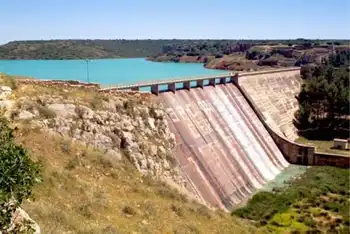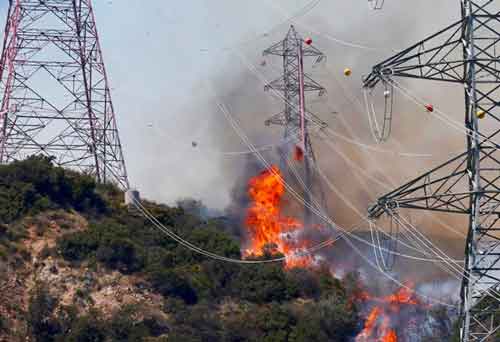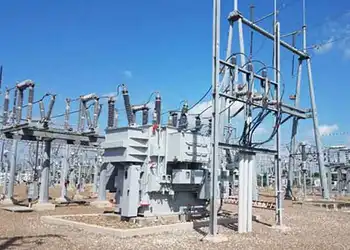More residents embrace wind power
OROVILLE, CALIFORNIA - The blades of a spinning turbine blur, pumping electricity as the wind whips through them - but it's not the Altamont Pass, but rather the home of Brad Laschinske, Oroville resident and alternative energy enthusiast.
Those whirring blades already are saving Laschinske about $400 a month in powering his six-acre ranch, dropping his monthly bill from $600 to $200. And it's not even prime wind season yet. When seasonal winds pick up this month, Laschinske's bill likely will drop to zero for three to five months, then return to about $200.
Estimates vary, but smaller homes in metropolitan areas can save as much as $2,000 a year using a wind turbine, experts say. $600 or more a year can be saved by using a wind turbine instead of solar energy, depending on a number of factors, according to Ron Stimmel, a small-wind advocate with the American Wind Energy Association.
The cost per kilowatt hour of electricity from a small wind turbine is about 10 cents, compared with about 18 cents per kilowatt hour for a solar photovoltaic installation, Stimmel said. The cost of purchase and installation is often less than that of a solar roof, he said.
The average installation cost for a wind turbine is about $3 to $5 per watt of capacity, whereas installing a solar photovoltaic unit in a residence costs $9 to $10 watt, depending on the condition of the home and other factors. But in the metropolitan Bay Area, a set of daunting obstacles stands in the way of installing a wind turbine, thanks to bureaucratic hassles, disapproving neighbors and, in many cities, a lack of established procedures.
Laschinske was able to take advantage of wind energy because he lives in Oroville.
"We preach a lot and say we want to use less energy and be sustainable, but we have a long way to go. If it doesn't look good in the neighbor's yard, we complain about it," said Lyall Hunter, founder and electrician at Excel Solar and Electric in Glen Ellen. Hunter gave up trying to deal with the obstacles involved in wind turbine installation and dedicated his business to solar energy.
The idea of installing a wind turbine is so new that many cities haven't begun to establish procedures for doing so. That's one of the biggest reasons there are almost no wind turbines in the backyards of homes in the metropolitan East Bay.
Nowadays, it's common to see solar panels on homes generating electricity for the residence and putting power back into the state's energy distribution system. Indeed, California is under a mandate, Senate Bill 1, signed in August 2006, to have 1 million solar roofs by 2018.
But it wasn't always that way. Renewable energy advocates say the wind turbine industry must fight for recognition much as the solar industry did.
"We, as pioneers, had to work very hard with city inspectors and planning departments to educate them about the realities of solar," said Muriel Thompson, a principal of SPG Solar of Novato.
"When you talk about the resistance to wind, you probably have not had a pioneering company that was determined to fight through all this to get the cities to understand it," Thompson said. A 5-kilowatt wind turbine suitable for a two-bedroom residence costs about $20,000, according to Stimmel. This is comparable to a solar panel display for a typical California home. It takes six to 30 years to recoup the investment, he said.
"It depends on your wind resource quality, how much you pay for electricity and how tall your tower is," Stimmel said. The taller the tower, the greater the wind speeds and hence the power.
A wind turbine for a 1,000-square-foot house would need to be 40- to 100-feet tall to do an effective job, Stimmel said. "Generally, a small wind turbine is less expensive than solar photovoltaic per watt," Stimmel said. California has a rebate program for such purchases, he said. For more information on the program, visit http://www.dsierusa.org.
"Even if you pay $55,000 for your system, it's only $27,000 after the rebate." How long it takes to get the wind turbine installed depends on the permitting process, Stimmel said. "It can take one afternoon or even years." Laschinske decided to purchase a turbine when he learned that the state was offering rebates.
"Energy prices are always going up," he said. His combined wind and solar energy system cost him $70,000, and he got a $30,000 rebate. He's happy with his turbine, which he says makes just a faint swooshing noise. But others don't see it that way. Noise and appearance are the two chief complaints about the turbines, proponents say.
"They do make a repetitive noise, whop, whop, whop, whop," Thompson said. "You who own the turbine are happy to live with it, perhaps. But your neighbors are not getting the benefits, so they're not as crazy about it."
It's even a battle in eco-friendly Berkeley, which has a wind turbine at its marina thanks in part to Alice La Pierre, an energy analyst for the city office of energy and sustainable development.
With regard to residential turbines, La Pierre said, "There's no point in going into that fight if you don't have enough wind. Before they even consider it they should buy or rent an anemometer and put it up for six months or a year to measure the wind." This step probably would be enough to deter most people. According to Stimmel and Hunter, it's seldom necessary to put up the measuring device. Experienced professionals can take a reading that will tell them whether there are sufficient wind resources, they said. La Pierre continued, "Next, check with the local zoning ordinances.... You definitely have to have wet-stamped foundation drawings from a civil engineer. To get it through zoning, you need all these things. For final permitting, you need a building and electrical permit." These obstacles could be enough to discourage all but the most determined.
With many other East Bay cities, the problem is that there are no policies to deal with wind turbines because the idea is so new.
"I don't know the answer," Jim Cushing, a commissioner on the Brentwood Planning Commission, said when asked how to go about installing a turbine. "We haven't had anything like this come up in the last two years I've been on the commission. Clearly it's something people are talking about." The commissioner added, "I would imagine if you looked in any of the major subdivisions in town, they would say this isn't consistent with the CC&Rs (covenants, conditions and restrictions)."
"I don't know," said Deborah Raines, planning manager for the city of Concord.
"It's not addressed in any of our codes. We do define accessory structures as buildings limited to 12 feet in height and square footage. Given our current code provisions, a proposal for a structure higher than 12 feet would not be allowed.
"If there was a groundswell of people coming to the city demanding to do this because they want to save money and get off the grid, we'd probably wait for direction from the City Council," Raines said. "As far as I know, we haven't gotten any requests from homeowners to put up wind turbines. If they wanted to, a building permit would be required, and there would be a design review application," said Andrew Thomas, planning services manager for the city of Alameda.
"Conceptually there's a lot of support for it. We would take it one case at a time," Thomas said. A representative of an East Bay subdivision was doubtful. "That (a wind turbine) doesn't seem like something that would be allowed to be installed, because of the height" under the CC&Rs of the Apple Hill community in Brentwood, according to Kristina Hindes, assistant to the community's property manager. "But f there's state law superseding the CC&Rs, that's a different matter."
Roy Helsing, founder and principal of the Helsing Group, which manages 900 homeowners associations, many of them in Contra Costa County, said, "I've been doing this for two decades, and nobody's ever asked for a windmill.
"Good associations are not in the business of keeping people from doing reasonable things. That said, if it's 200 feet tall and is going to fall on someone's house, that would be a concern. If someone was going to put in something of reasonable size, that's another matter."
The only reason it would be restricted is if it were noisy or a danger, Helsing said. There's actually an 1,800-watt wind turbine helping to power a home at 25th and Alabama streets in San Francisco's Mission District. The home, part of a project called the Idea House by Sunset Magazine, has had an operational wind turbine for a month, according to Scott Jackson of Evergreen Development in Chico.
Jackson's firm consulted with the homeowners on their turbine. There have been no problems with noise or complaints. Jackson has a different perspective on wind turbines.
"There is a state law, AB1207, that says if you've got three acres or more you can put up anything up to 100 feet," Jackson said. "If you live in town, that doesn't mean you can't do it, you just have to go through the use permit process."
Jackson said Solano County is fairly open to wind turbines. He is confident that over time other jurisdictions will come on board.
"When you say, 'turbine,' you think of this big thing. What we do are single-site, single-point feeds, just for the homeowner's meter."
Related News

World Bank Backs India's Low-Carbon Transition with $1.5 Billion
INDIA - In a significant move towards bolstering India's efforts towards a low-carbon future, the World Bank has approved an additional $1.5 billion in financing. This article explores how this funding aims to support India's transition to cleaner energy sources, the projects it will fund, and the broader implications for sustainable development.
Commitment to Low-Carbon Transition
India, as one of the world's largest economies, faces substantial challenges in balancing economic growth with environmental sustainability. The country has committed to reducing its carbon footprint and enhancing energy efficiency through various initiatives and partnerships. The World Bank's financing represents a crucial step…




